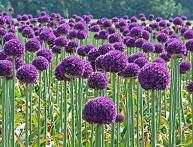Growing cottonweed on a personal plot

Vatnik or Asclepius (named after the ancient Greek god of healing) was named so for its excellent medicinal properties. Growing cottonweed produces ripened seeds covered with fibrous cotton wool.
The cottontail is developing well in open areas. When growing cottonweed, you need to take into account that some species grow quite aggressively. Without forming a dense clump, new shoots sometimes “shoot out” almost a meter from the mother plant. That is why, to form a compact bush, the plant should be limited by growing it in a dug-in container with drainage holes or limiting it to a dug-in border. Growing cottonweed in one place is possible for up to 10 years.
soil You can choose any cultivated one, but fertile, slightly acidic loam is desirable. Syrian milkweed is drought-resistant, and red milkweed is moisture-loving.
Reproduces by division, the bushes grow very quickly. It is better to divide in spring or in the second half of summer. The cottonweed is easily propagated by seeds. There are no particular difficulties with growing seedlings. Cottonweeds begin to bloom at the age of 3-4, so a plant obtained from a section of rhizome will bloom faster.
It is not recommended to plant cottonweed next to small perennials, since not everyone can tolerate the proximity of such a powerful plant. The cottonweed goes quite well with tall grains: high pearl barley, reed grass, miscanthus, tall varieties of meadow grass, pike grass.Also, cottonweed flowers look good next to aconite, echinacea, physostegia, veronicastrum, and tall types of bells.








